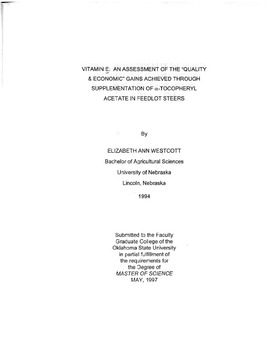| dc.description.abstract | Of the many challenges that the U. S. beef industry must address, customer satisfaction and approval remain a top priority. Profitability in the retail beef sector functions on a narrow profit margin with a large percentage of the monetary loss being due to unacceptable product color. In fact, the National Cattleman's Beef Association (1993) estimated a loss of approximately $520 million annually due to discoloration of retail beef products (Wheeler et al., 1996). Customers associate fresh beef with a bright cherry red color, and any variation can lead to an unsatisfied consumer and thus a "bad experience" (Kropf, 1980). At the point in which beef products begin to darken, a retai.ler is forced to do one of three things: 1) discount or mark down the price of the product, 2) convert the product to a new product of lesser value (ex. grinding to hamburger) or 3) discard the product at a 100% loss. Discoloration of beef products is not only a concern within the U. S. beef market but, within the global market as well. In 1994, the International Beef Quality Audit (Morgan et aI., 1994) found that inadequate case life was the fifth most concern of all foreign buyers of U.S. beef products and was the largest problem identified by Japanese retailers. In turn, U.S. beef market share will continue to grow internationally if improvements are made in this area. | |
